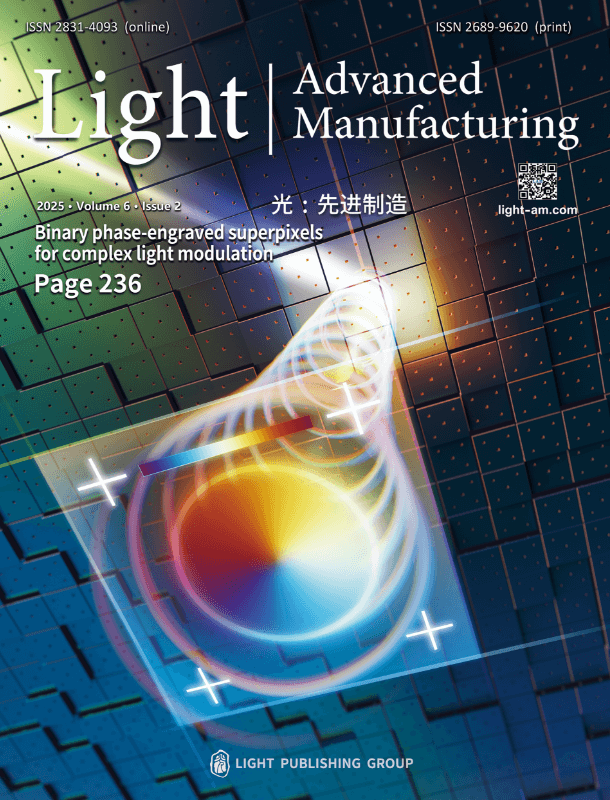-
The information technology (IT) sector demands higher computational performance and improved power efficiency in semiconductor chips to rapidly process massive datasets. Conventional von Neumann architectures, which physically segregate memory and processing units, face fundamental limitations like the “memory wall” problem, resulting in significant power overheads and communication latency issues. To overcome these challenges, researchers are pioneering bioinspired computing architectures that consolidate memory and logic operations into unified components, thereby emulating biological efficiency1–3. Such neuromorphic computing systems are being increasingly recognised as foundational to next-generation information processing technologies4,5.
As a representative type of memristive devices, resistive random-access memory (RRAM) offers numerous advantages for integration with standard complementary metal-oxide semiconductor (CMOS)-adaptable technologies, including ultra-small energy dissipation, multi-state programmability, nanosecond-scale operation, and compact device dimensions1. These characteristics, combined with their inherent non-volatile memory and logic processing functions, position them as ideal candidates for next-generation memory and brain-inspired computing systems6. To date, current neuromorphic implementations have employed several diverse material systems, such as organic small molecules and polymers7, transition metal dichalcogenides (TMDs)8,9, metal oxides10,11, and metal-organic frameworks (MOFs)12. With photoresponsive characteristics extending across the ultraviolet to near-infrared spectral ranges, these materials face inherent limitations for solar-blind sensing. Moreover, previously investigated memristive devices typically offer only specialised single functionalities without integrated versatility, which hinders further device downscaling and integration while also impeding energy efficiency improvements in neuromorphic systems.
Addressing these limitations, Chang et al. from Xidian University, Nanjing University, and the Chinese Academy of Sciences have utilised amorphous Ga2O3 with a large energy gap as the active layer in memristive devices, where Ag and Pt are the top and bottom electrodes, respectively13. Their findings, published in Light: Science & Applications, show that multibit memory, logic operation, optical sensing, and neuromorphic computation can be concurrently realised within this individual memristive cell (Fig. 1). The device initially exhibits reliable bipolar switching at elevated compliance current (Icc) levels. Electrical tuning of Icc enables four programmable high-conductance states, while photon modulation utilising graded 254 nm ultraviolet exposure (at a fixed 1 mA Icc) produces four addressable low-conductance states. With these states demonstrating excellent retention, the synergistic use of electrical and optical controls realised eight programmable conductance states, facilitating 3-bit information storage. In addition, the bipolar switching characteristics of the device produced distinct resistance values under oppositely biased polarities. This behaviour allows the system to operate as a dual-input (ultraviolet irradiation and electrical bias) single-output (conductance) logic device. Specifically, “OR” and “AND” logic operations are achieved under forward and reverse applied voltage, respectively.

Fig. 1 An amorphous Ga2O3 versatile memristive device realising four-in-one functionality, merging multibit memory, logic operation, light detection, and neuromorphic computation. R, t, I, and N represent resistance, time, current, and pulse number, respectively.
In addition, owing to the structural analogy between this two-terminal device and biological pre-/post-synaptic connections, it can mimic diverse forms of biological phenomena and brain-like learning/forgetting behaviours by responding to sequential ultraviolet spikes that emulate external signals. Under repeated training cycles, the device exhibited progressive memory consolidation, where the learned information became increasingly resistant to erasure, closely replicating human cognitive processes. Furthermore, this device leverages long-term potentiation states induced by sequential ultraviolet irradiation spikes and long-term depression states triggered by bias spikes to function as connection weights between neurones in artificial neural networks. Progressive training loops enable rapid and highly accurate identification of handwritten digit images.
Chang et al. presented a promising approach for developing multifunctional photoelectric memristive devices with a simplified architecture. However, further investigations are necessary to optimise the memristor performance, particularly in terms of reconfigurability and switching behaviour across various operational modes, stability of resistive switching parameters over repeated scanning cycles, and linear response and bidirectional symmetry in weight modulation. Another key challenge lies in memristor integration, which requires the development of densely packed and versatile arrays while ensuring uniformity in amorphous Ga2O3 thin films and minimising performance variations between individual devices.
Nevertheless, this demonstration validates the potential of versatile memristive devices that can simultaneously achieve multibit memory, logical operations, light detection, and neuromorphic computation. The inherent functional versatility and configuration simplicity of this study may also allow the production of specialised in-memory computing chiplets, opening pathways for creating sophisticated multifunctional integrated circuits through state-of-the-art packaging solutions.
A multifunctional optoelectronic memristor for in-memory computing
- Light: Advanced Manufacturing , Article number: (2025)
- Received: 10 May 2025
- Revised: 20 June 2025
- Accepted: 23 June 2025 Published online: 25 July 2025
doi: https://doi.org/10.37188/lam.2025.053
Abstract: An amorphous Ga2O3 versatile memristive device has been fabricated to realise four-in-one functionality, merging multibit memory, logic operation, light detection, and neuromorphic computation.
Rights and permissions
Open Access This article is licensed under a Creative Commons Attribution 4.0 International License, which permits use, sharing, adaptation, distribution and reproduction in any medium or format, as long as you give appropriate credit to the original author(s) and the source, provide a link to the Creative Commons license, and indicate if changes were made. The images or other third party material in this article are included in the article′s Creative Commons license, unless indicated otherwise in a credit line to the material. If material is not included in the article′s Creative Commons license and your intended use is not permitted by statutory regulation or exceeds the permitted use, you will need to obtain permission directly from the copyright holder. To view a copy of this license, visit http://creativecommons.org/licenses/by/4.0/.






 DownLoad:
DownLoad: